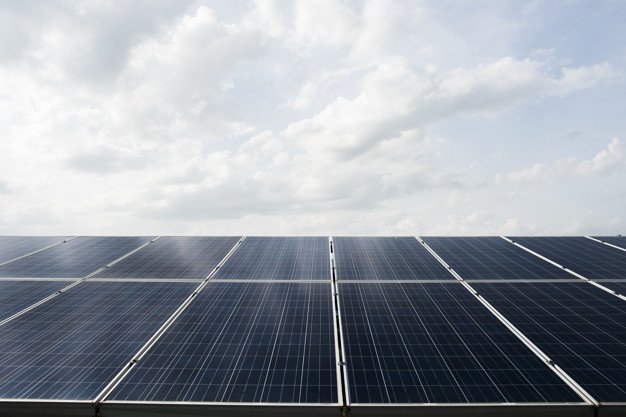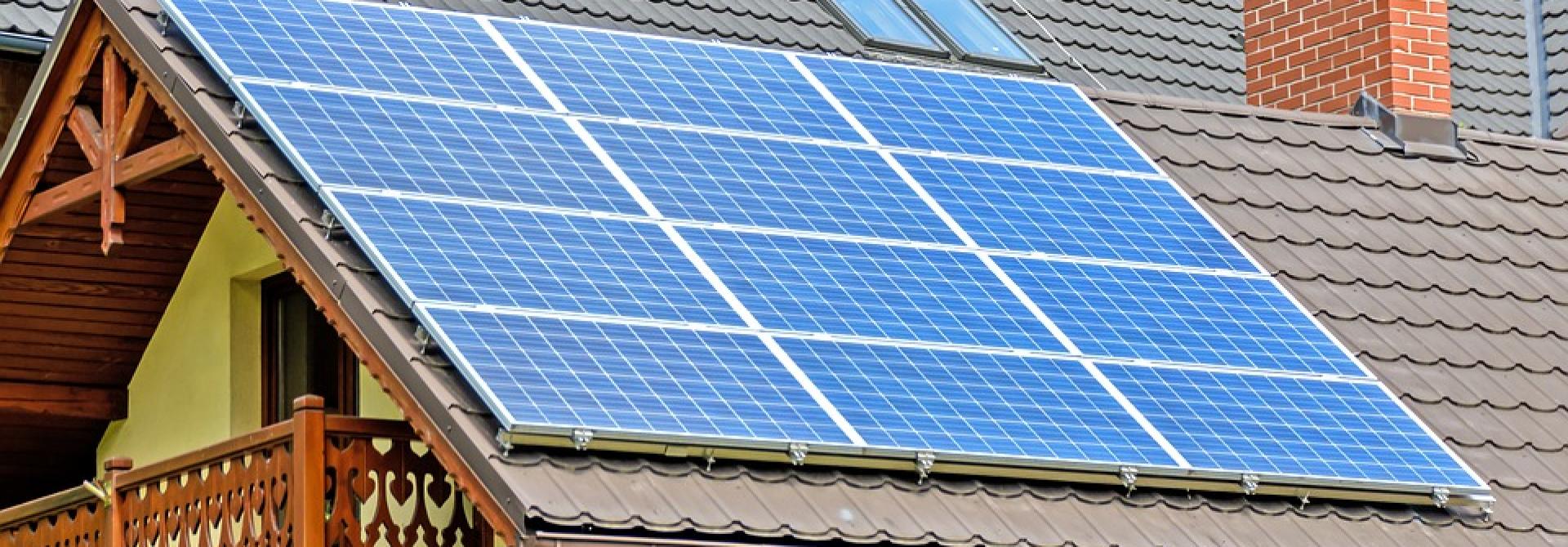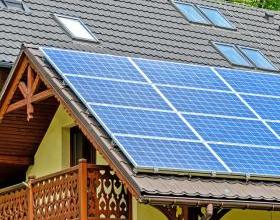
To learn how the 2019 eco-bonus works, we bring you a complete guide to energy saving deduction. With us, you will discover what it is and when it is possible to access the deduction between 50 and 65 percent and up to 75% for condominiums.
The 2019 eco-bonus is the deduction for energy saving jobs that allows, even this year, access to a discount of 50 to 65 percent of the expenditure incurred.
To explain how the eco-bonus works are the Revenue Agency's guide, inside which it is illustrated how to request the tax deduction, the expected fulfillment and above all what are the energy saving jobs.
The Revenue Agency publishes the eco-bonus guide on 12 February 2019 where the requirements and rules that benefit us have been confirmed. Therefore, we pass directly to the topic of how works the 50% or 65% bonus calculated in base on the type of work performed.
With regard to the works allowed in deduction, it could be 2019 the year of the changes to the spending limits that, although it is a novelty provided for by the last Budget Law, for the moment it has remained without application.
In the decree, currently known only in draft, it is expected that the current spending limits will be modified and, in detail, there will be 28 new spending ceilings depending on the type of intervention.
At the moment, however, there is no news and we must refer to the rules already in force. The deduction to which one is entitled with the eco-bonus is recognized in a different measure with respect to the type of work performed and varies from 50% to 65%.
For energy-saving works and the simultaneous reduction of seismic risk, the eco-bonus can reach up to 85% and the main tax advantages refer to the costs incurred for work on common parts of condominium buildings.
Below you will find a complete guide to the Revenue Agency with all the news and instructions to request the 2019 eco-bonus.
Eco-bonus 2019: our complete guide
In the following lines, you will find all the information needed to understand how the 2019 eco-bonus works and what the tax-deductible expenses are.
Eco-bonus 2019: Summary
Eco-bonus 2019: what it is and how it works. Revenue Agency Guide
The 2019 eco-bonus is the personal income tax or IRES deduction granted to taxpayers who carry out energy saving work on existing buildings. The bonus is paid in the form of a reduction in taxes due in 10 equal annual installments.
The deduction was extended by the Budget Law until December 31, 2019, for work in private buildings, while, for expenses incurred for work in common parts of condominiums, the deadline for making use of the facility is set for December 31, 2021.
To explain in detail how the eco-bonus works it is useful to refer to the guide published by the Revenue Agency containing all the news on the income tax deduction.
In 2019 the personal income tax deduction will reach up to 85% in cases of work aimed also at improving the seismic risk of apartment buildings. For private buildings, however, the tax discount will differ between 50% and 65% depending on the work performed.
For interventions carried out in common parts of the condominium that do not involve modifications aimed at reducing the seismic risk, the amount of the Irpef deduction can vary from 70% to 75%.
In the event that interventions and restructuring costs to improve energy efficiency affect the entire building envelope, the eco-bonus can increase up to 70% (if the works involve 25% of the total area of the building). condominium), while it will be 75% if the energy reclassification will aim to improve and save on energy costs both in summer and winter.
One of the requirements to request the deduction for energy redevelopment is that the intervention is carried out on existing buildings proving the existence of them, which can be of any cadastral category.
Keep in mind that the eco-bonus is allowed even in the case of redevelopment of instrumental assets.
Before seeing what are the expenses and interventions for which the Ifpef or Ires deduction can be requested and the news relating to the planned spending limits, the Revenue Agency's guide to the eco-bonus is attached here.
Eco-bonus 2019, with a deduction of 65 and 50 percent: what expenses to expect
To request the eco-bonus in 2019, it is necessary that the expense for which the deduction is requested refers to specific interventions aimed at energy saving and, due to the changes introduced by the last budget law, the amount of the bonus already recognized. It will not be the same. a deduction of 65% for all jobs, but will be differentiated into two different rates.
Let's see what are the expenses for which the eco-bonus will be 50%, 65%, 70% and up to 85% for condominium works:
- Eco-bonus 2019 at 50% for the following interventions:
- interventions related to the replacement of windows including frames;
- sunscreens;
- biomass boilers;
- condensing boilers, which continue to be admitted provided they have an average seasonal efficiency at least equal to that required to belong to class A of the product envisaged by regulation (EU) no. 18 / 2013. However, condensing boilers can access deductions of 65% if, in addition to being in class A, they are equipped with advanced thermoregulation systems belonging to classes V, VI or VIII of the Commission communication 2014 / C 207 / 02.
- Eco-bonus 2019 at 65% for the following interventions
- interventions of insulation of the opaque envelope;
- heat pumps;
- building automation systems;
- solar collectors for hot water production;
- heat pump water heater;
- that is, hybrid generators consist of a heat pump integrated with a condensing boiler, assembled in the factory and designed expressly by the manufacturer to work together.
- Eco-bonus condominiums 2019 at 70 or 85% for the following interventions
- condominium type interventions. Attention: this deduction is valid for the expenses incurred from 1 January 2017 to 31 December 2021, with the spending limit of 40,000 euros multiplied by the number of real estate units that make up the building. If the same interventions are carried out in buildings belonging to the seismic zones 1, 2 or 3 and also aim to reduce the seismic risk that determines the transition to a lower risk class, a deduction of 80% is provided. With the reduction of 2 or more seismic risk classes, the expected deduction reaches 85%. The maximum allowable spending limit, in this case, increases to 136,000 euros, multiplied by the number of housing units that make up the building.
The logic pursued by the new Eco-bonus is to facilitate with higher deductions the expenses that allow you to benefit from a greater level of energy savings.
Maximum deductible expenditure
Currently, specific limits are indicated for the expenses admitted to the deduction. The maximum amount on which the eco-bonus will determine is divided as follows:
- 100,000 euros for energy upgrading works;
- 60,000 euros for work on the building envelope;
- € 30,000 for the replacement of winter air-conditioning systems, or the installation of plants equipped with condensing boilers, high-efficiency heat pumps and low-enthalpy geothermal systems;
- 60,000 euros for the installation of solar panels useful for the production of hot water for domestic or industrial use and for covering hot water needs in swimming pools, sports facilities, shelter and care homes, schools and universities.
As anticipated, the MISE intends to introduce new spending limits for each individual intervention, which will be added to the thresholds established for all investments.
The decree, foreseen by the recent Budget Law, will completely rewrite the rules to benefit from tax deductions for the interventions implemented for the energy requalification of buildings.
These are important innovations that at the same time make the eco-bonus rather complex: just think that the aforementioned decree consists of more than 50 pages (including attachments), of which a large part is dedicated to illustrating deductible expenses.
Therefore, depending on the situation, the maximum threshold for deducting a single intervention may depend on the square meters of the building or on the kW; consequently, the share of expenditure that will exceed this threshold cannot be deducted for personal income tax purposes.
As already mentioned, the MISE, together with MIT and the MEF, is working to approve a decree with new spending ceilings: there will be 28 new limits and the novelty is based on the size of the building calculation.
For example, it will be so for the frames in which it is possible to deduct 50% of the cost incurred up to a maximum of 350 euros (or 450 euros depending on the area in which one finds oneself) for each square meter. This will also be the case for sun protection, which can always be deducted at 50%, but within a limit of 180 euros per square meter.
Different speech for those who buy condensing boilers, heat pumps or biomass heat generators; In this case, in fact, the maximum threshold will depend on the product's kW.
However, as anticipated, the decree has been released so far only in draft form and further changes are expected in the coming months.
Returning to the current rules, let's see how eco-bonus works for condominiums.
Eco-bonus for condominiums: all the rules
With regards to the 2019 eco-bonus for condominium works, reference must be made to different rules, in particular with reference to the Irpef deduction amounts recognized.
The deduction of 65% also applies to documented expenses and must be paid by the taxpayer for interventions related to the common parts of the condominium buildings or involving all the real estate units that make up the single condominium, incurred from 6 June 2013 until 31 December 2021.
For interventions in the building envelope that represent over 25% of the building surface, the eco-bonus rises to 70%, while it is 75% if the intervention aims to improve energy efficiency both in winter and in winter. summer.
Specific rules also regarding the amount of the expense, which is 40,000 euros multiplied by the number of units that make up the property.
In the event that the interventions are carried out in condominium buildings belonging to seismic zones 1, 2 or 3 and that is also aimed at reducing the seismic risk, the deduction will be equal to:
- 80% of expenditure incurred if the works determine a shift to a lower risk class;
- 85% of expenditure if the works determine the transition to 2 or more lower seismic risk classes.
In these cases, the maximum limit of the deductible expenses, equal to 136,000 euros multiplied by the number of real estate units that make up the property, also changes.
Credit transfer: how to get the eco-bonus in cash
With the circular letter n. 11 / E published on 18 May 2018, the Revenue Agency provided instructions on how to transfer the Eco-bonus credit: taxpayers, both for work carried out in private buildings and condominiums, can benefit from the cash tax bonus.
This is a particularly interesting and convenient opportunity, especially for incapacitated taxpayers or taxpayers in a no-tax area, who until the introduction of the assignment of the due credit was in fact excluded from the possibility of benefiting from the deductions.
How does the sale of eco-bonus work? In practice, taxpayers can transfer the tax credit to one of the topics listed below and benefit from the cash bonus and a solution (against 10 installments of the same amount recognized as a reduction in Irpef or Ires taxes due).
The 2019 eco-bonus can be transferred to:
- associative bodies, including consortia and consortium companies, even if they are owned by financial parties, but not by a majority stake and without controlling them;
- Energy Service Companies (ESCOs), companies that provide energy services by facing a financial risk;
- of Energy Services Companies (SSE), including craft businesses and their consortium forms that offer integrated services for the construction and possible subsequent management of energy saving measures.
All instructions are contained in the circular published by the Revenue to which reference is made for further clarification.
Requirements and beneficiaries
All taxpayers, including business income holders, who own property in favor of which energy upgrading works are implemented, can benefit from the deduction, ie:
- taxpayers who earn business income (natural persons, partnerships, corporations);
- associations between professionals;
- public and private bodies that do not carry out commercial activities;
- natural persons that is: holders of a real right on the property, condominiums for interventions on common parts, tenants, those who own property on loan, family members or cohabitants who bear the costs.
How to pay and documents to keep
Expenses incurred must be paid in the following ways:
- tax payers who do not have a business income will have to pay by bank transfer or postal transfer, indicating the reason for payment, the tax identification number of the beneficiary of the deduction, the VAT number or the bank account number. of the person in favor of which the payment is made
- taxpayers with business income are not subject to the obligation to pay by bank transfer, but the important thing is to keep appropriate documentation for proof of expenses.
To benefit from the deduction provided, taxpayers who have incurred the expense must be careful to keep the following documentation, useful for certifying whether and to what extent they are entitled to eco-bonus in 2019:
- certification of a qualified technician or declaration made by the construction manager;
- certificate of participation in a specific training course in the case of self-construction of solar panels.
- energy certification of the property provided by the Region or by the local authority or energy qualification certificate prepared by a qualified professional.
To benefit from the deduction it is essential to make the communication to ENEA, even before indicating the expense incurred in the tax return.
Communication ENEA eco-bonus 2019: deadline and instructions
Within 90 days from the end of the energy requalification works, the taxpayer is asked to transmit to the ENEA, in electronic mode, the information sheet of the work carried out and the copy of the energy qualification certificate.
The ENEA file can be sent starting March 11th, the date the site was put online for the works completed in 2019.
The site can be reached from the following address: https://detrazionifiscali.enea.it
All instructions on ENEA ecobonus communication are available within the portal.





